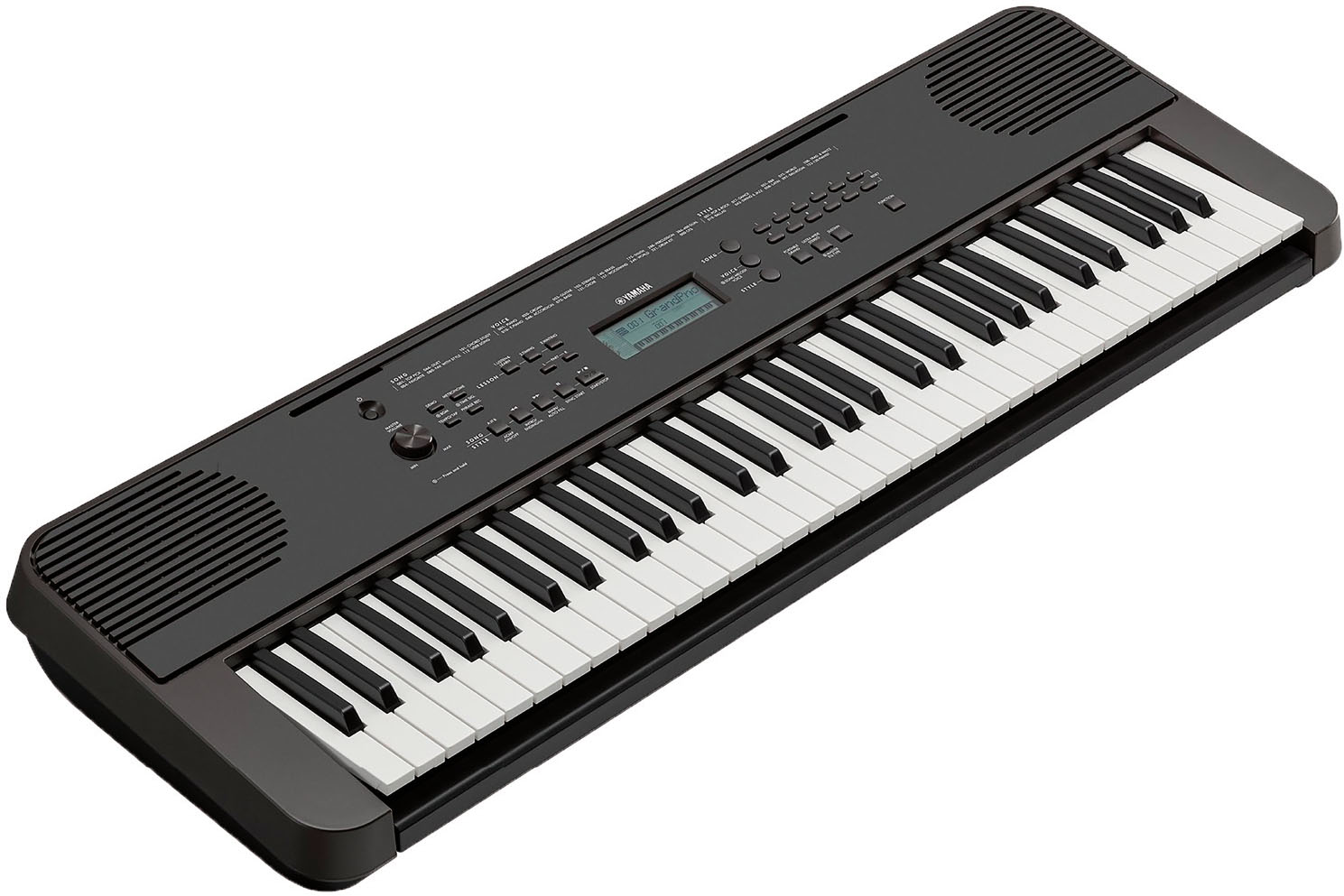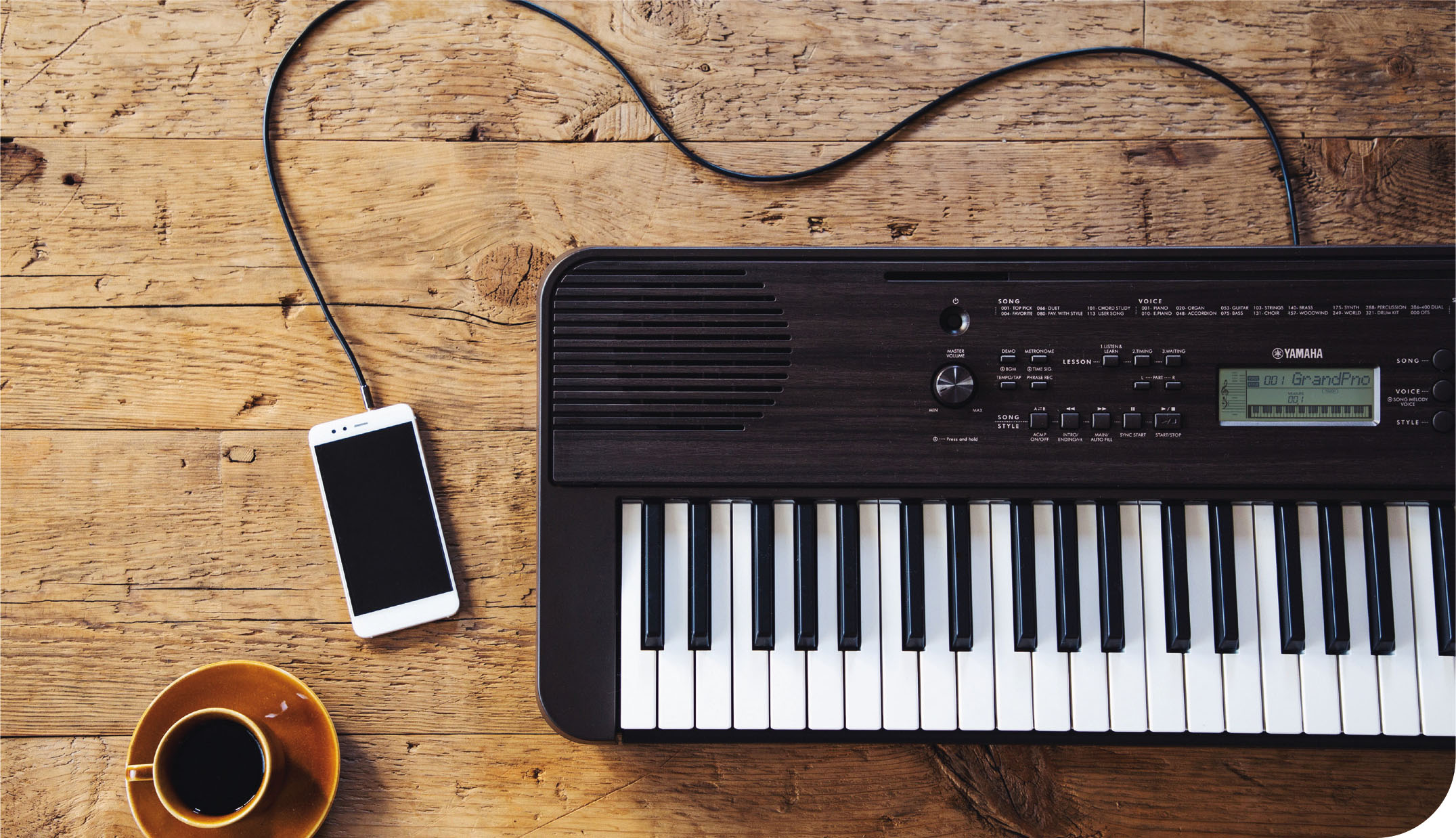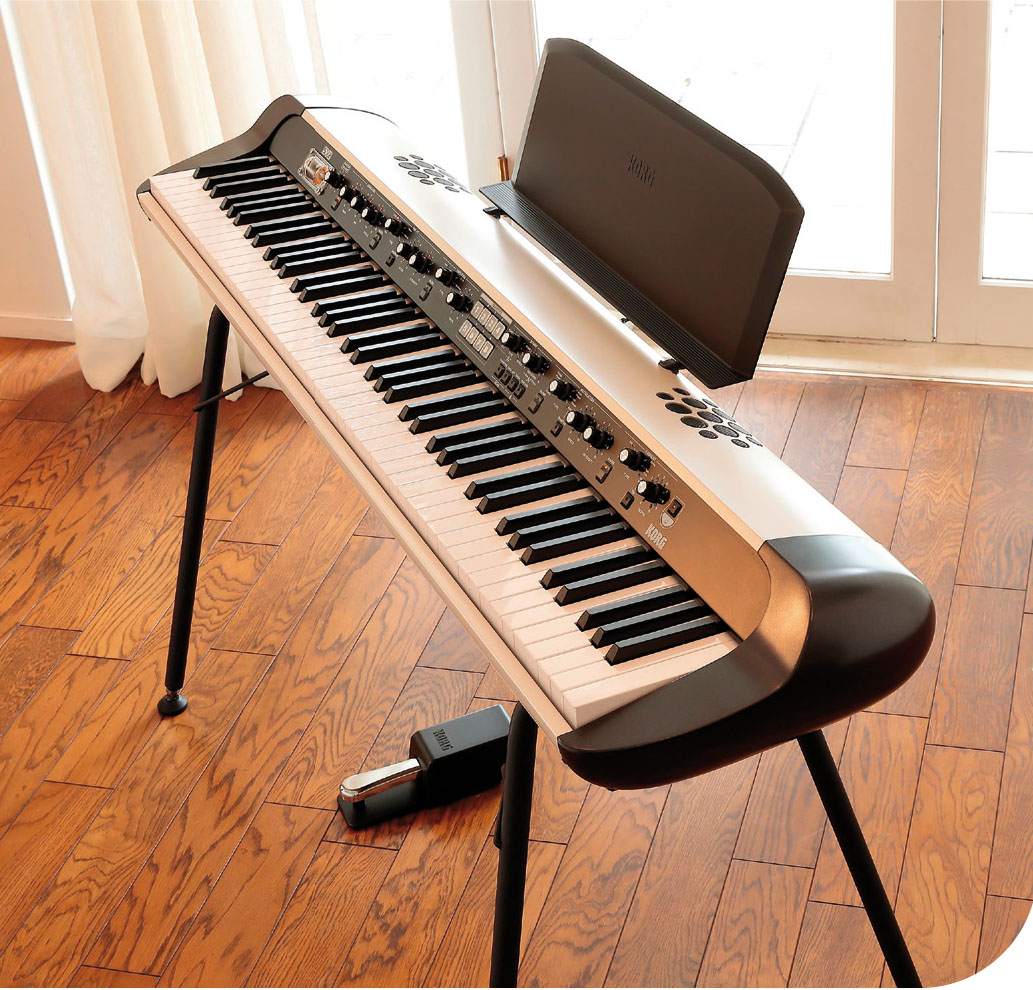
The choice of instrument is one which can consume musicians for years. This choice is even more important when the musician in question is a beginner. Choose the wrong instrument and you risk putting a young player off before they have even begun their musical journey. The world of digital pianos has come a long way since I started my own journey on an unweighted rickety keyboard which threatened to topple under the weight of my teenage Rachmaninoff obsession.
Digital pianos offer a flexibility and budget which can make them a practical choice for learners. They also offer a range of features for the beginner pianist of all ages, which can help drive the learner over those all-important first hurdles. Casio and Yamaha have recently released new instruments targeted specifically at this market which do just that. For balance, we have also considered a professional-level entry from Korg, which gives an indication of just how far this market has grown.
Casiotone S1
The CT-S1 from the Casiotone family is billed as a ‘Starter Keyboard’ from Casio. For history buffs, the Casiotone family has a long lineage stretching back to the 1980s. The original CT-201 was designed as the first main-market affordable electronic keyboard with full-sized keys. The relaunched range comes in black, grey, and Nord-like red. The first impression out of the box is of a sleek, professional instrument, designed with the player in mind.
Yamaha PSR-E360B

Yamaha PSR-360B £179 © YAMAHA
The PortaSound series is Yamaha's answer to the portable educational market, integrating a sleek, light entry-level piano with the digital wizardry which characterises Yamaha's commercial instruments. The 360 is available in black, with walnut and maple versions also available. The display comes with the familiar Yamaha LCD port, and a tantalising range of tone and function buttons!
Sound
So, let's see how these two instruments perform. The first consideration, for any teacher at least, will be the sound. In order to pass the test, not only will the keyboard need to accurately reproduce the sound of a piano, but also the subtle changes in tone which come with different volumes and attack speeds. Professional stage pianos sample an individual note up to 20 times in order to recreate all the nuances of tonal differences. The sacrifice for that is memory, which quickly equates to both cost and weight in the final instrument.
The load-up piano sound from the Casio is bright and welcoming with a gentle richness in the lower registers, becoming bell-like towards the top. Although Casio doesn't admit to which instrument was sampled for the CT series, the tone was reminiscent of a Yamaha C7.
A generous two second hall reverb adds to this concert-grand impression, staying just the right side of intrusive. The piano sound comes with three variations: a dryer, brighter ‘modern’ piano, warmer ‘vintage’ piano, and piano and string pad combination.
In addition to the piano sounds, there are two electric piano patches: organ and synth (sampled from the Wurlitzer and Fender Rhodes respectively). In all my years of teaching, I can count on one hand the number of times I have used these additional sounds in lessons, but what students get up to outside of lessons is their own business!
The sound is produced through a stereo speaker bar mounted above the keyboard, and amply fills an average living room. There is a clever ‘surround sound’ feature, which is achieved by applying a gentle stereo chorus across the speaker bar. The effect is absent while using headphones.
The Yamaha, as one would expect from one of the world's venerable concert piano makers, is equipped with a robust and bright grand piano sound. Personally, I spent most of my time on Mellow Piano, one of the other six available ‘classic’ piano sounds. This is a far more even toned instrument, which is still capable of a bit of roar at high attack speeds. The PSR comes pre-loaded with 400 voice patches, ranging from harpsichords to gun shots! This will keep young creatives busy for a long time.
Touch
Both instruments responded well to different touches, producing a range of timbres at different volumes. Here is where the instruments really start to diverge; the Casio is built with semi-weighed keys. The touch is lightweight but responsive, and the keys are full sized. The keybed is springy and allows for an impressive repetition speed, even without a double escapement mechanism. The adjustable touch feature allows for a range of different responses, with the heaviest giving a fairly even balance across the instrument.
The Yamaha action is unweighted, although the keys are full size. This may be a deciding factor for some young pianists; if the aim is to move on to acoustic pianos and classical repertoire, introducing learners to the weight of a keyboard is invaluable. If, however, the learner is heading down a more electronic path, the range of tones, effects, and options available with the PSR more than balances out the slightly artificial key feel.
The PSR offers 32-note polyphony throughout all of the 400 voices. The CT edges in with 64-note polyphony on most of the voices (32 on some of the more complex, layered patches).
Polyphony in this context is the number of notes an instrument can sustain at any one time. With a sustain pedal, this can quickly build up to more than just the 10 fingers available, although 32 seems more than sufficient.
Compass
Both instruments have a shortened 61-key range. This leaves middle C floating disconcertingly off-centre towards the bottom end of the instrument. Both instruments, however, feature octave shift and transpose feature, allowing either end of the missing compass to be accessed.
Aesthetics
Another area where the instruments diverge is on aesthetics. The Casio is sleek, professional, and uncluttered. Aimed at a no-nonsense audience, the display features the minimum of heavy weight buttons and a sturdy volume pot. There are reassuringly few ‘hidden’ features of the ‘hold this while holding this’ variety, which used to plague digital piano design. The rear port connections are reassuringly simple, with connections for a pedal, audio in and headphones. My only complaint would be the headphone jack, which only accommodates 3.5mm, although this is hardly a quibble.

Yamaha PSR (dark walnut)
The final slot is for a Bluetooth dongle, which connects the Casio to either a phone or tablet. This allows you to feed in to the ‘Chordana Play’ app, which comes complete with an array of play-along repertoire for learners young and not-so-young. The MIDI visualiser (familiar from YouTube) is a great tool for engaging fine motor skills, and the ability to vary tempo is equally useful. Finally, the S1 has a surprisingly sturdy clip-on music desk, which deals with even my antiquated volume. As a final quibble, it would be nice if a sustain pedal were included in the box.
The Yamaha is a very different beast; a range of soft-touch rubber buttons greets the player, promising everything from rhythms and accompaniment styles to multitrack recording facilities. Although it can take a while to navigate these features, the basic tone, volume, and built-in metronome are easy to locate and use.
A rather inventive feature of the Yamaha is the ability to isolate the left- and right-hand parts of the demo lesson material. The supporting material can be downloaded in either tablet or printer friendly formats.
Both instruments are likely to support learners on their journey for several years. The journey the learner takes will likely support the choice of instrument. The PSR, with its chord, rhythm and tonal features will help a commercially minded player on a journey towards producing and programming. The CT-S1 is a more traditional instrument, with enough extra features for adventurous students, but with a grounding firmly in the acoustic piano tradition. Both instruments are generously priced for the entry-level market and feel sturdy enough to support years of use and affection.
Korg SV-2
At the other end of the market, the SV-2 from Korg is a professional-level stage piano, with some user-friendly concessions to the home market. The Stage Vintage series is already an established brand on stages at Glastonbury, for example. The iconic design, retro styling and colouring easily mark this instrument out in a crowd. The player's eye is first drawn to a valve processor mounted on the left of the dashboard, which adds a gentle (and controllable) analogue second order harmonic distortion to the sound.

Korg SV-2 - from around £1,500 © KORG
The basic piano sound is warm, even, and realistic enough to fool my husband, even through the built-in speakers. Rare for a stage piano to come with speakers, these produce a balanced, powerful and distortion free signal which is ideal for home use, and I for one am grateful not to have to carry an amplifier to rehearsals!
The instrument comes with a built-in three band EQ, compressor, customisable modulation effects and expandable memory. All of these can be pre-set to a handy favourites selection, sensibly positioned in the middle of the dashboard. This instrument is all about building the exact sound you want, and then being able to access it on stage.
For the more classically minded pianist, the action features the RH3 keybed and a graded hammer action, with a heavier response at the lower end of the keyboard, gradually thinning out at the top. In short, this feels like playing a well-regulated concert instrument. It sounds like it, too. The instrument faithfully reproduces Bösendorfer, Steinway and Yamaha concert models, all sampled with a clarity and precision which defies imagination. Each patch goes right down to reproducing string resonance and pedal noise (variable via a handy pot). On the CP-80 electric piano sample, the patch even reproduces the familiar hammer ‘zip’ from the icon model.
Although this is far from an entry-level instrument, it is an inspirational musical partner which has pushed my playing in the short time it has lived in my studio. For any keyboard player, at any stage of their musical journey, the Korg SV-2 would be a coveted and motivational partnership, which would last a lifetime.

CHANCE TO WIN!
Yamaha has generously decided to gift the PSR-E360B reviewed here to a worthy cause, whether that be a music department in a school or a specialist setting, or something else. Please write to us at music.teacher@markallengroup.com detailing, in no more than 200 words, why your chosen setting should receive the keyboard, and MT's new Editorial Advisory Board (see p.8) will select a winner. Remember to include all relevant information and contact details. Closing date: 15 November.








